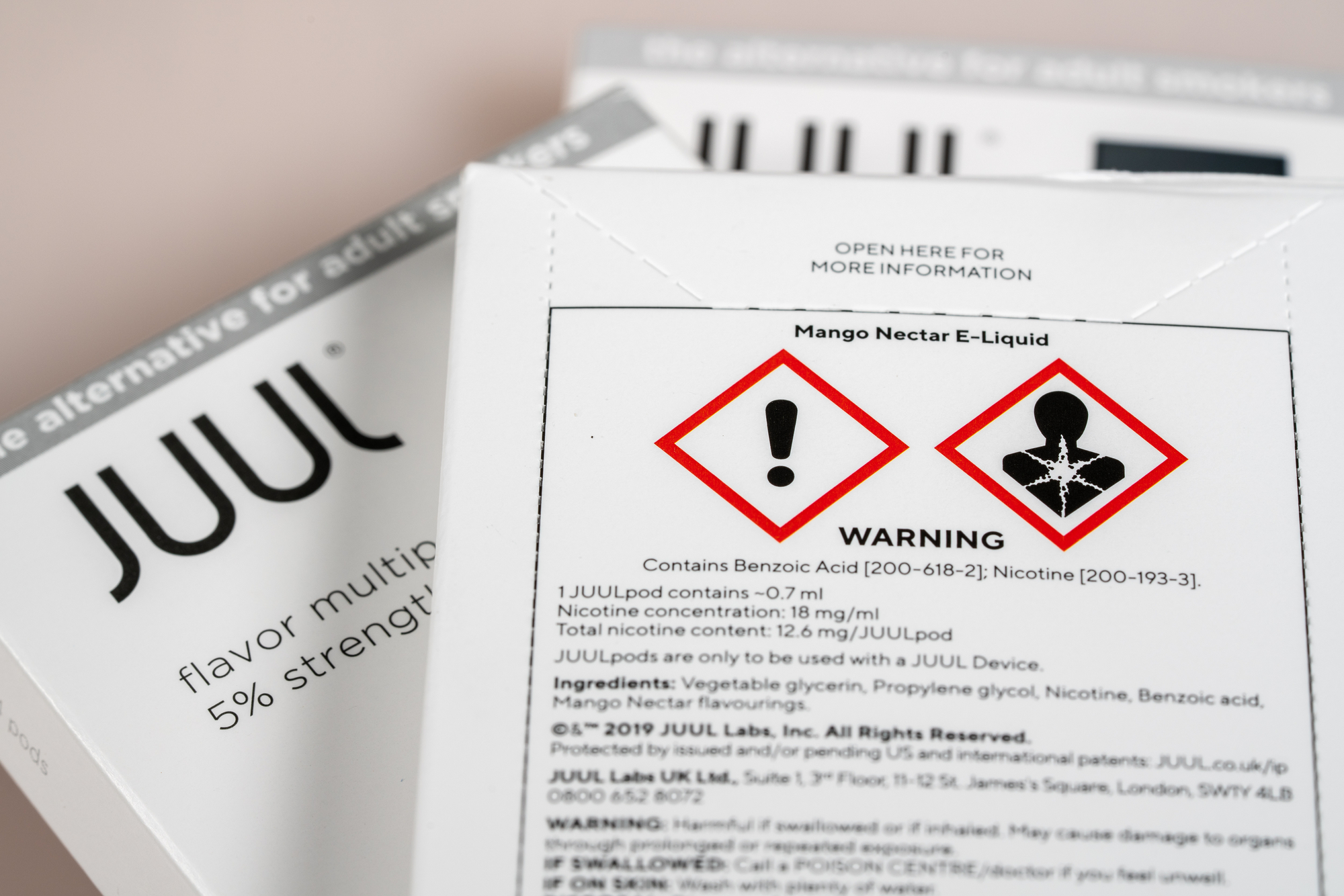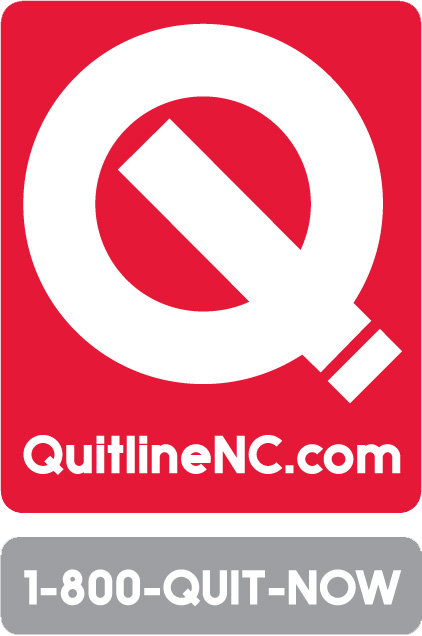
Fighting E-Cigarettes: 7 Things Every Parent Needs to Know About Vaping
Susan Foster, CSAPC
Assistant Director, Substance Use Prevention Programs
Virginia Johnson, CSAPC
Substance Use Prevention Director
The dangerous health effects of vaping have been making headlines. As prevention specialists, we want to answer some of the commonly asked questions we receive during our #YouthCulture and Drugs Uncovered parent education programs.
What exactly is a vape?
An e-cigarette or “vape” is a mechanical device designed to heat up a liquid. Once heated, the liquid turns into an aerosol that is then inhaled and exhaled. This is referred to as “vaping” because the cloud created by e-cigarettes when exhaled is often mistaken for water vapor. It is important to note that this cloud is not simply water vapor.

If the vaping clouds are not water vapor, what are they?
According to the U.S. Surgeon General, the e-cigarette aerosol not only includes the highly addictive substance nicotine that comes from tobacco, but also includes ultrafine particles of heavy metals such as tin, nickel and lead. The aerosol includes flavorants such as diacetyl, and volatile organic compounds that can be inhaled deeply into the lungs. These ingredients have been linked to cancer, serious respiratory issues, lung disease, heart disease and addiction. The ultrafine aerosol mist that users inhale and exhale exposes the user, bystanders, and the environment to these harmful materials.
How do youths start vaping? Is it addictive?
For adolescents, vaping is often a social experience where the e-cigarettes are passed around and shared. This a common way a young person is introduced to a vape product. The developing adolescent brain is more vulnerable to the effects of nicotine than the adult brain, so there is a greater likelihood of addiction for adolescents.
How often are youths vaping?
According to the Monitoring the Future Survey, about 37% of high school seniors reported using e-cigarettes within the preceding year and about 10 percent report daily use.
Are youths using vapes to get “high?” What are they “high” on?
Vape devices are a mechanism to heat up substance into aerosol form to be inhaled and quickly absorbed into the body. Vape devices and the liquids that are heated inside come in a wide variety of shapes, sizes, and ingredients. Most vapes contain nicotine, and some devices use nicotine salts with a very high concentration of nicotine and a very fast absorption rate. This creates a quick “high” and a very short time before the next craving which further increases the likelihood of addiction. In addition to nicotine, vape devices can also be used as a delivery mechanism for other substances such as THC, CBD, spice, flakka, and even ketamine. There is a real concern that youth may not know exactly what they are vaping or how it will affect their bodies.
What can I do? How do I talk to my child about this?

It is important for parents to be informed and to talk to their children. It is never too early to start talking to your child about the dangers of e-cigarettes. If your child is in elementary school, a prevention conversation should focus on what is safe for your body and what is not. During these early conversations, make sure to identify trusted adults your child can go to with more questions. These conversations are meant to be ongoing and increasingly informative. At the Poe Center, we begin talking about addiction and the effects of nicotine on the brain and body in our 4th grade programs.
To help prevent substance use at all ages, we must make sure that children have the skills to resist peer pressure, reduce stress, and increase communication. A great way to do this is to model healthy stress-relieving techniques and to roleplay ways to say “no” to substances with your child. Check out our Refusal Skills handout for more tips. Be proactive and you will reinforce and strengthen the protective factors and reduce the risk factors in your child’s life.
What if my youth is already vaping?
Talking through the risks and dangers of vaping is a great start, but you may also need to discuss strategies for cessation.
- For teens, there is online support available by texting DITCHJUUL to 890-07.

- Check out QuitLineNC.com or 1-800-Quit-Now. QuitlineNC provides resources, tools, and tips for those on the path to quitting including free cessation services and coaching.
- If you are concerned your child may be vaping, we recommend talking to your child’s pediatrician.
- Parents can also contact the Tobacco Treatment Programs at the UNC Department of Family Medicine for additional support, including in-person counseling sessions.
Although we are still learning about the negative health impacts of vaping, please remember that vaping is dangerous. It is especially dangerous to youths since their developing brains are highly susceptible to addiction. There is a lot of misinformation online and in the news, so be sure to use trusted sources when researching vaping.
Above all else, don’t be afraid of having a conversation. Even though they may not act like it, children value their parents’ opinions and want to hear from you. Talk to your child about the consequences of vaping and help them build their skills to make healthy decisions. Need help? Download our Tobacco Resources for Parents and Other Concerned Adults for additional resources, including tips for conversation starters with your child. Be brave, start a conversation, and you will work towards a healthier lifestyle for your child.
Resources:
Tobacco Resources for Parents and Other Concerned Adults
Featured Poe Programs: E-Cigarettes 101 – for Adults
Grade Level: Adults | Program Length: 90 minutes
This program addresses the growing concern of e-cigarettes and youth. Participants will explore adolescent brain development and the effects of e-cigarettes as we cover the latest research. We will also take a look at the risk factors for use, and the protective factors that help prevent use. A discussion on resources and strategies for increasing protective factors with our youth will leave attendees with tools for the next steps.

Vaping 101 – for Youths
Grade Level: 6th – 12th grades | Program Length: 60 minutes
Vaping 101 addresses the growing concern of e-cigarettes and youth. Participants will learn about the addictive nature of nicotine and how addiction impacts the brain and body. Risk factors for addictive behaviors, substance addiction warning signs, and the signs of a nicotine medical emergency will be discussed.
Featured Crio Lesson: Choices & Consequences
Grade Level: K – 5th grade | Program Length: 15-45 min
The Poe Center has partnered with SAS through Curriculum Pathways to provide online access to health science and health education lessons at no cost to teachers across the State of North Carolina. Designed to complement its health education curriculum, the Poe Center’s programs and online content are aligned with the North Carolina Department of Public Instruction’s Healthful Living and Science Essential Standards.

We know that substance use is damaging to the growing brain and body. The first lesson in this series will explore how much money tobacco use will cost you and the benefits of not using nicotine products. The second lesson focuses on how to refuse alcohol, tobacco and other drugs.
